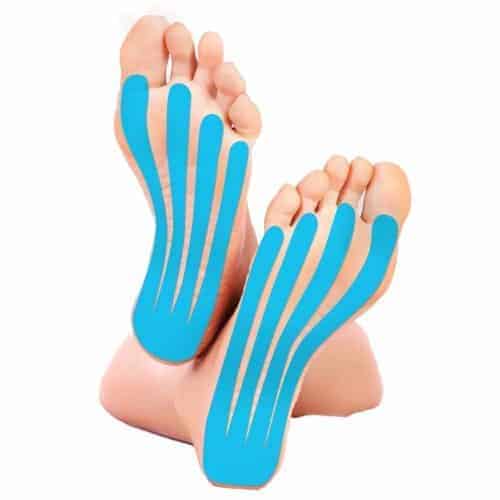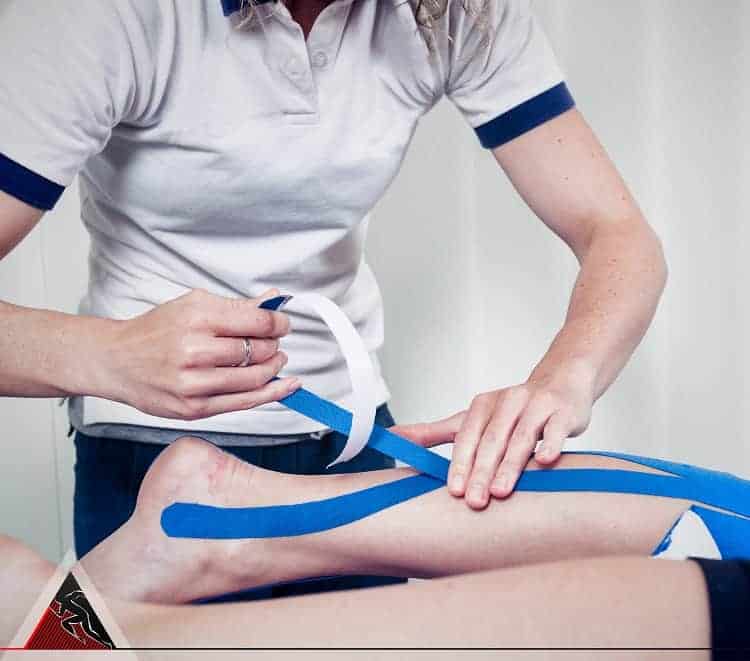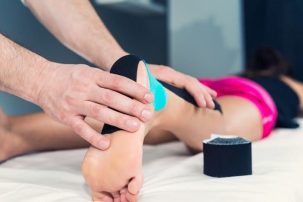Blog
Ultimate Guide – How to Apply Kinesiology Taping Plantar Fasciitis
Medical specialists have proposed a number of conservative treatments for the management of plantar fasciitis, including night splints, orthotic inserts and kinesiology taping plantar fasciitis. The latter represents one of the most efficient methods of improving the symptoms experienced by the patient who suffers from plantar fasciitis, as you will also have the opportunity to read in the paragraphs below.
Plantar fasciitis is one of the most common inflammatory conditions that appears in general population, involving a part of the lower limb (the foot). It is considered that there are a number of factors which contribute to the appearance of such problems, including the high BMI (obesity) and the excess pronation of the foot.
Low-dye kinesiology taping plantar fasciitis, an efficient conservative treatment
The low-dye taping was applied in a specific manner, right below the ankle. The main idea was to correct the excess pronation of the foot, by creating a supinating opposing force (subtalar joint). The application of the kinesiology tape has been clearly demonstrated to reduce the amount of pressure on the plantar fascia, not only in standing but also during walking. The sports tape has practically increased the mechanical stability of the foot, allowing the strained plantar fascia to recover.
In patients who suffer from plantar fasciitis, low-dye kinesiology taping plantar fasciitis is an efficient conservative treatment and one that delivers almost immediate results upon being enforced. The good news is that it can be applied in both acute and chronic cases of plantar fasciitis.

Kinesiology taping, a method to reduce plantar fascia thickness
As the researchers conducting this particular study point out, the tape can mimic the skin’s elasticity and create a pulling force that corrects any deviations of the foot (such as over-pronation). Apart from that, it can improve the overall functioning of the local muscles and even increase kinesthetic awareness. The regular application of kinesiology tape can reduce the existent pressure at the level of soft tissues; moreover, the kinesiology tape plantar fasciitis can stimulate the blood and lymph circulation.
All the participants to the study had their fascial thickness measured with the help of musculoskeletal ultrasonography. At the same time, the pain intensity was measured with the help of a pain rating scale (subjective assessment). The study concluded that the application of kinesiology tape can decrease the plantar fascia thickness; however, in order for the results to be maintained, the applications have to repeated on a long-term basis.
It was also concluded that the application of tape could improve the sports-related performance, as opposed to the one related to activities of daily living. Taping remains an excellent conservative treatment for people who suffer from plantar fasciitis; it has the advantage of being easy to learn and apply, plus it can reduce the intensity of pain and guarantee an improved level of functioning for most patients.
DISCOUNT CODES:
Enter your name & email address, click the link below, and we will send you discount codes
Order Today
Up to 50% for your Starktape products

DISCOUNT EXPIRES IN:
BONUS: in addition you'll receive free access to StarkTape VIP Memeber Club, to stay on top of the latest news and products.
Fascia unloading through kinesiology taping
Plantar fasciitis is often encountered in professional athletes, such as runners. As they engage in repetitive movements, the plantar fascia begins to shorten and also to become thicker.
As such changes are subtle at first, when stretching exercises are performed, the plantar fascia is inadequately lengthened and enters into a dysfunctional state, with a high risk of tearing. The more quickly these stretches are performed, the bigger the susceptibility for microtears is going to be.
The application of kinesiology taping in patients with plantar fasciitis can alleviate the pain experienced at the level of the heel. This is because of fascial unloading, which means a reduction of the mechanical stress present at the level of the plantar fascia and surrounding soft tissues.
The tape is applied in a specific manner, so that convolutions at the level of the skin are created. In this way, the interstitial spaces between the various plantar fascia layers are increased.

Upon receiving taping applications, patients experience a reduction of pain intensity, less stiffness and an improved range of motion in the affected joints. The pain relief is guaranteed by the reduction of the overall mechanical load, which can affect the nerve endings of the plantar fascia as well.
The physical therapist will position the foot in a stretched position, as this is ideal for the application of the kinesiology tape. Upon returning to its normal position, skin convolutions are going to be visible in the area of the application.
The tape application is also meant to stimulate the blood and lymph circulation in the area, unloading the plantar fascia and reducing the overall experienced pain at the same time.
The kinesiology tape is extremely effective, reaching even the deep layers of the plantar fascia and reducing its susceptibility to microtears.
Final word
If you are suffering from plantar fasciitis, the application of kinesiology tape can help you feel better. You can easily learn to apply the tape yourself, enjoying the pain relief it brings. At the same time, kinesiology taping plantar fasciitis can help you improve your overall range of motion and forget all about stiffness or other similar problems caused by plantar fasciitis.


